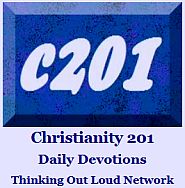 See the book pictured here? I haven’t. I’ve never read a single page, and I’ve never held a copy in my hand. In fact, I have never received a review book from that publisher.
See the book pictured here? I haven’t. I’ve never read a single page, and I’ve never held a copy in my hand. In fact, I have never received a review book from that publisher.
So what am I doing here purporting to review the book? What’s more, not just reviewing, but I want to strongly recommend this one.
It just so happened that really recently, I happened upon a copy of the previous volume, Urban Legends of the New Testament, 40 Common Misconceptions by David Croteau.
The title grabbed me right away, but it didn’t win me over as much as I was hooked by two other factors.
First, the imprint on the back said the book was published by B&H Academic, but this title had a genuine accessibility to it that suggested it would be appreciated by more than just students and scholars. This one is also listed as an academic title, but the treatment of each ‘myth’ is short and largely non-technical, and the retail price of $14.99 US is far less than the usual academic tome.
Second, the table of contents was a varied mix of “myths” I had seen debunked before, and some that were new to me. Three kings at the manger? C’mon, everybody knows that one. But Grace meaning unmerited favor? What’s wrong with that?
This time around there’s a co-author (or co-myth-buster), Gary E. Yates. I’m reproducing a table of contents for Urban Legends of the Old Testament that I found online in the hope that you’ll be drawn to read this as much as I was with the first. God has promised you a prosperous future? I think readers here are onside with me on that myth. But you’re telling me the high priest didn’t have a rope tied around his ankle on the Day of Atonement?
Mrs. Clymer, my Grade Two Sunday School teacher is not going to be happy about that one.
B&H Publishing (Broadman and Holman) did not send me a review copy of this book, nor would I expect one, given my outspoken views concerning their sister company LifeWay. We’ve agreed to disagree.
Because it’s in my files already, here’s the cover image for the first book I mentioned above. I expect they’ll brand these two books and give the first a cover more similar to the second.















It looks a lot like the “Myths and Urban Legends” list is comprised of three or four types of “Urban Legends” here, without authorial differentiation:
The Obviously Silly and Easily Debunked (cf. 3, 20, 26, 35, 37, etc.)
The Inconclusive but Plausible (cf. 8, 22, 29, 32, etc)
The Inconclusive and Non-Provable (cf. 2, 5, 21, 25, 36, etc)
The Explicitly Spelled-Out (cf. 11, 13, 27, etc)
The overall effect of running all these things together (I suspect the same applies to the first volume) is to cast an aspersion on the Old Testament’s authenticity and inerrancy, such that we conclude that the Bible is “a good guidebook to know” and a “useful source of life-principles” but not the infallible Word of the Most High God as though we owed its accuracy our allegiance and its commands our obedience. Thus the poison seeps in and spreads.
Comment by J. J. Griffing — December 6, 2019 @ 10:58 am
You’re obviously very familiar with the book, but I have to say I have a very different conclusion as to its purpose and its usefulness and it’s a long way away from your use of the word poison.
Just as the Bereans searched the scriptures I find this type of book causes me to delve into deeper study.
The legends are not caused by the text itself but by the way different passages have been preached over the centuries. The book attempts to clear some of these up.
Comment by paulthinkingoutloud — December 6, 2019 @ 12:13 pm
Not familiar with the book at all– just the general trend of Myths About The Bible works in my experience. I tend to give most such works a side-eye and a wide berth. Overly cynical perhaps, on my part, but I tried to qualify my censure with “It looks a lot like, allowing room for error (on my part) and correction (for which I thank you!) My assessment was based on what little I see above, filtered and colored by what I’ve seen elsewhere.
I am greatly relieved to hear your contrary report on this count regarding the NT book and thus take its recommendation to correspond also to the volume above, insofar as they’re primarily written by the same man.
Comment by J. J. Griffing — December 6, 2019 @ 12:57 pm